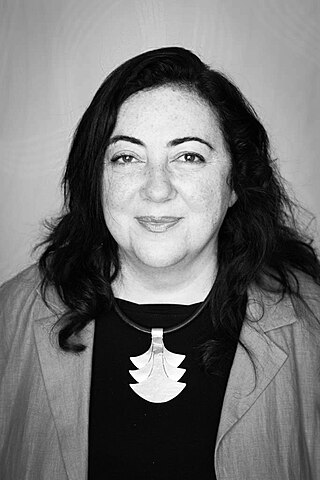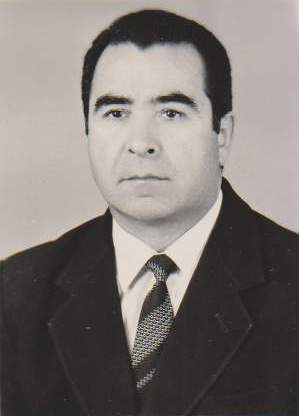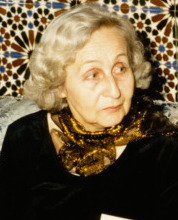
Tajikistan, officially the Republic of Tajikistan, is a landlocked country in Central Asia. It has an area of 142,326 km2 (54,952 sq mi) and an estimated population of 9,750,065 people. Dushanbe is the country's capital and largest city. It is bordered by Afghanistan to the south, Uzbekistan to the west, Kyrgyzstan to the north, and China to the east. It is separated narrowly from Pakistan by Afghanistan's Wakhan Corridor. Tajiks form the ethnic majority in the country and their national language is Tajik; a Persian language that is closely related to the mutually intelligible dialects of Farsi and Dari of Iran and Afghanistan.

Tajiks are a Persian-speaking Iranian ethnic group native to Central Asia, living primarily in Afghanistan, Tajikistan, and Uzbekistan. Tajiks are the largest ethnicity in Tajikistan, and the second-largest in Afghanistan and Uzbekistan. They speak varieties of Persian, a Western Iranian language. In Tajikistan, since the 1939 Soviet census, its small Pamiri and Yaghnobi ethnic groups are included as Tajiks. In China, the term is used to refer to its Pamiri ethnic groups, the Tajiks of Xinjiang, who speak the Eastern Iranian Pamiri languages. In Afghanistan, the Pamiris are counted as a separate ethnic group.

Bobojon Gafurovich Ghafurov or Babadzan Gafurovich Gafurov was a Tajik historian, academician, and the author of several books published in Russian and Tajik, including History of Tajikistan and The Tajiks.

Tajik National University is the first and largest university in Tajikistan. It enrolls 23,000 students per year in 18 different academic disciplines.

Shahrbanou Tadjbakhsh is an Iranian-American researcher, university lecturer, and United Nations consultant in peacebuilding, conflict resolution, counter-terrorism, and radicalization, best known for her work in "Human Security" and for contributions in the republics of Central Asia and Afghanistan, as cited by the New York Times and other publications as well as hundreds of scholarly publications. Currently, she is a lecturer at Sciences Po, researcher, and consultant to the United Nations.
Dr. Guzel Maitdinova (Maytdinova) is a Eurasian geopolitician, ethnologist, historian and archeologist based in Tajikistan. She is a professor at the Department of History and Theory of International Relations of Russian-Tajik (Slavic) University (RTSU), a Director of the Center of Geopolitical Studies of Russian-Tajik (Slavic) University, and an executive director of the Central Asian Expert Club 'Eurasian Development' in Dushanbe.
Muqaddama Ashrafi was a Tajik medievalist and art historian.
Larisa Nazarovna Dodkhudoeva is a Tajikistani art historian.
Sa'diniso Hafizovna Hakimova was a Tajikistani obstetrician and gynecologist.
Muhiba Muhsinovna Yakubova is a Tajikistani biologist.
Muborak Umarovna Mansurova was a Tajikistani biologist.
Munzifa Kakharovna Gafarova was a Tajikistani philosopher. She was the first woman from Central Asia to be awarded a doctorate in philosophy.
Khosiat Qosimovna Boboeva is a Tajikistani historian of the Soviet era.
Malohat Badriddinovna Shahobova was a Tajikistani linguist.
Sorojon Mikhailovna Yusufova was a Tajik geologist and academic of the Soviet era.
Rohat Abduvahobona Nabieva was a Tajikistani historian, active in the Soviet era and after. She was among the first historians in her country to consider history through the lens of gender.

Khudoyor Yusufbekovich Yusufbekov was a Soviet scientist and organizer of scientific projects and institutes in Pamir. He was a leading scientist who made a significant contribution to the development of biological sciences, whose name is connected with a new direction of the development of plant growing in the arid mountain and highland territory of Pamir-Alay; a prominent specialist in the field of plant growing, plant introduction and pasture economy, meadow studies, phyto-amelioration, and botany, Yusufbekov was a practicing field researcher, figure of higher education, and professor. In 1968, he developed a system for fodder improvement in the Pamir and Alay valleys that was differentiated from the perspective of the ecological and geographical areas and high-altitude zones. He also implemented a system of arid fodder, and proposed methods of cultivation of useful plants in the Pamir area in 1972. In 1970—1975, Khudoyor Yusufbekov developed the master plan of reconstruction of the Pamir Botanical Garden. In 1969, he became doctor of the agricultural sciences. In 1976, he became an Academician of the Academy of Sciences of the Tajik Soviet Socialist Republic. In 1962—1969, he was the director of the Pamir Biological Station; at the same time in 1965—1990, he was the Chairman of the Bureau of the Pamir Base; in 1969—1981, the director of the Pamir Biological Institute of the Academy of Sciences of the Tajik SSR; in 1981—1986, the rector of the Tajik Agricultural Institute of the Ministry of Agriculture of the USSR; in 1986—1990, the Academician Secretary of the Biological Department of the Academy of Sciences of the Tajik SSR. From 1989, he was a Member of the Presidium of Academy of Sciences of the Tajik SSR. Moreover, he was a state and public figure, the head of the scientific council of the department of biological science of the Academy of Sciences of the Tajik SSR and a Member of the coordination council of the department of general biology of the Academy of Sciences of the USSR (1987—1990). He was also a fellow of the Geographical Society of the USSR since 1965, Member of the All-Union and Central Asian Councils of the Botanical Gardens of the USSR (1972—1990), Member of the Council on the "Biological Foundations of the Rational Use and Protection of Flora" of the Academy of Sciences of the USSR (1976—1990), Member of the Council on the "Biological Foundations of the Development of Mountain Territories in Central Asia" (1975—1990), Member of the Council of the All-Union Botanical Society (1976—1990).

Galina Anatolyevna Pugachenkova was a Soviet archaeologist and art historian, regarded as a founder of Uzbek archaeology and central to the progression of archaeology and art history under Soviet regimes. Her work has contributed greatly to the register of surviving buildings in Central Asia and in many cases was the first register of traditional surviving buildings. Pugachenkova directed a branch of the archaeological expedition of southern Turkmenistan from 1946 to 1961, and of the Uzbek historical-artistic expedition from 1959 to 1984.

Mikhail Stepanovich Andreyev was a Russian-Uzbek and Soviet orientalist, cultural researcher of Central Asia, ethnographer, linguist, and archaeologist. He was initially supervised by Vladimir Nalivkin, and was the teacher of Olga Alexandrovna Sukhareva. He was a corresponding member of the Russian Academy of Sciences.

Zafar Juraevich Usmanov was a Soviet and Tajik mathematician, doctor of physical and mathematical sciences (1974), professor (1983), full member of the Academy of Sciences of the Republic of Tajikistan (1981), Honored scientist of the Republic of Tajikistan (1997), laureate of the State Prize of Tajikistan in the field of science and technology named after Abu Ali ibn Sino (2013).







